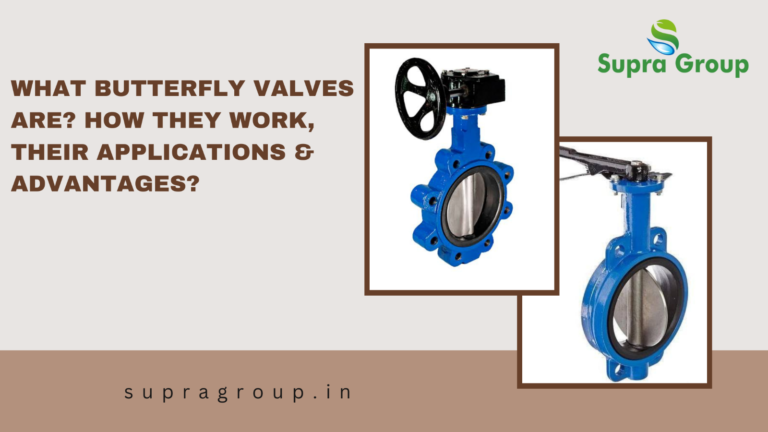
In the realm of industrial fluid control, butterfly valves stand as one of the most versatile and widely used devices. These engineering marvels have evolved significantly over time, adapting to various industries' needs. From simple applications to complex systems, butterfly valves offer reliable, efficient, and cost-effective fluid control solutions. In this blog, we will explore what butterfly valves are, how they work, their applications, advantages, and a glimpse into their future.
Understanding Butterfly Valves
Butterfly valves belong to the family of quarter-turn valves, characterized by a disk-shaped closing mechanism that rotates a quarter-turn to control the flow of fluids. The valve's name originates from the wing-like shape of the disk, which resembles a butterfly. These valves are primarily used to regulate, isolate, or control the flow of liquids, gases, or slurries within pipelines.
How Butterfly Valves Work
The working principle of a butterfly valve is relatively simple yet highly effective. The valve's disk is mounted on a rod or shaft positioned in the center of the pipeline. When the valve is open, the disk is rotated parallel to the flow, allowing unobstructed passage for the fluid. Conversely, when the valve is closed, the disk turns perpendicular to the flow, blocking the fluid flow entirely.
There are three types of butterfly valves based on the design of the disk: concentric, eccentric, and double-offset. Each type offers unique benefits, making them suitable for various applications.
Applications of Butterfly Valves
Butterfly valves find extensive use across a wide range of industries due to their versatility and effectiveness. Some common applications include:
- Water Supply and Treatment: Butterfly valves are widely used in municipal water supply networks and water treatment plants for flow regulation and control.
- HVAC Systems: Heating, Ventilation, and Air Conditioning (HVAC) systems utilize butterfly valves to control air and water flow in commercial and residential buildings.
- Chemical and Petrochemical Industry: In industries dealing with corrosive or hazardous fluids, butterfly valves are preferred for their robustness and resistance to chemical exposure.
- Food and Beverage Processing: Butterfly valves are used in the food and beverage industry for controlling the flow of liquids and semi-liquids during processing.
- Fire Protection Systems: They are an essential component of fire protection systems, enabling quick shutoff in emergencies.
- Marine and Shipbuilding: Butterfly valves are employed in maritime applications due to their compact design and ease of operation.
Advantages of Butterfly Valves
Butterfly valves offer several advantages that make them a preferred choice for fluid control:
- Cost-Effective: Butterfly valves are generally more affordable than other types of valves, making them a cost-effective solution for various applications.
- Compact and Lightweight: Their compact design and lightweight construction make installation and maintenance easier and more efficient.
- Quick Operation: The quarter-turn operation allows for rapid opening and closing, enabling swift response to flow control needs.
- Low-Pressure Drop: Butterfly valves have low-pressure drop characteristics, resulting in minimal energy loss during operation.
- Versatility: With various materials and designs available, butterfly valves can handle a wide range of fluids and operating conditions.
Future Trends and Innovations
As technology advances, so do industrial components like butterfly valves. Some future trends and innovations to watch out for include:
- Smart and Automated Valves: Integration of smart technologies and automation will enable remote monitoring and control, enhancing efficiency and reducing maintenance costs.
- Enhanced Materials: The development of advanced materials will improve the valves' performance in extreme conditions, increasing their lifespan and reliability.
- Eco-Friendly Solutions: The industry's growing focus on sustainability may lead to the development of butterfly valves with reduced environmental impact and energy consumption.
Conclusion
Butterfly valves have been an integral part of fluid control systems for decades, and their significance is only growing with time. With their simple yet effective design, extensive applications, and numerous advantages, they continue to be a staple in various industries. As technology advances, we can expect even more innovative solutions that push the boundaries of efficiency, reliability, and environmental responsibility. Whether it's managing water supply, handling corrosive chemicals, or optimizing HVAC systems, butterfly valves will undoubtedly continue to play a vital role in shaping the future of fluid control.
With a legacy built on precision engineering, customization, and unwavering commitment to quality, Supra Enterprises stands tall as a trusted butterfly valve manufacturer. Their products not only meet the stringent demands of industries but also contribute to the seamless operation of critical processes. For industries seeking reliable fluid control solutions, Supra Enterprises remains a beacon of excellence.

